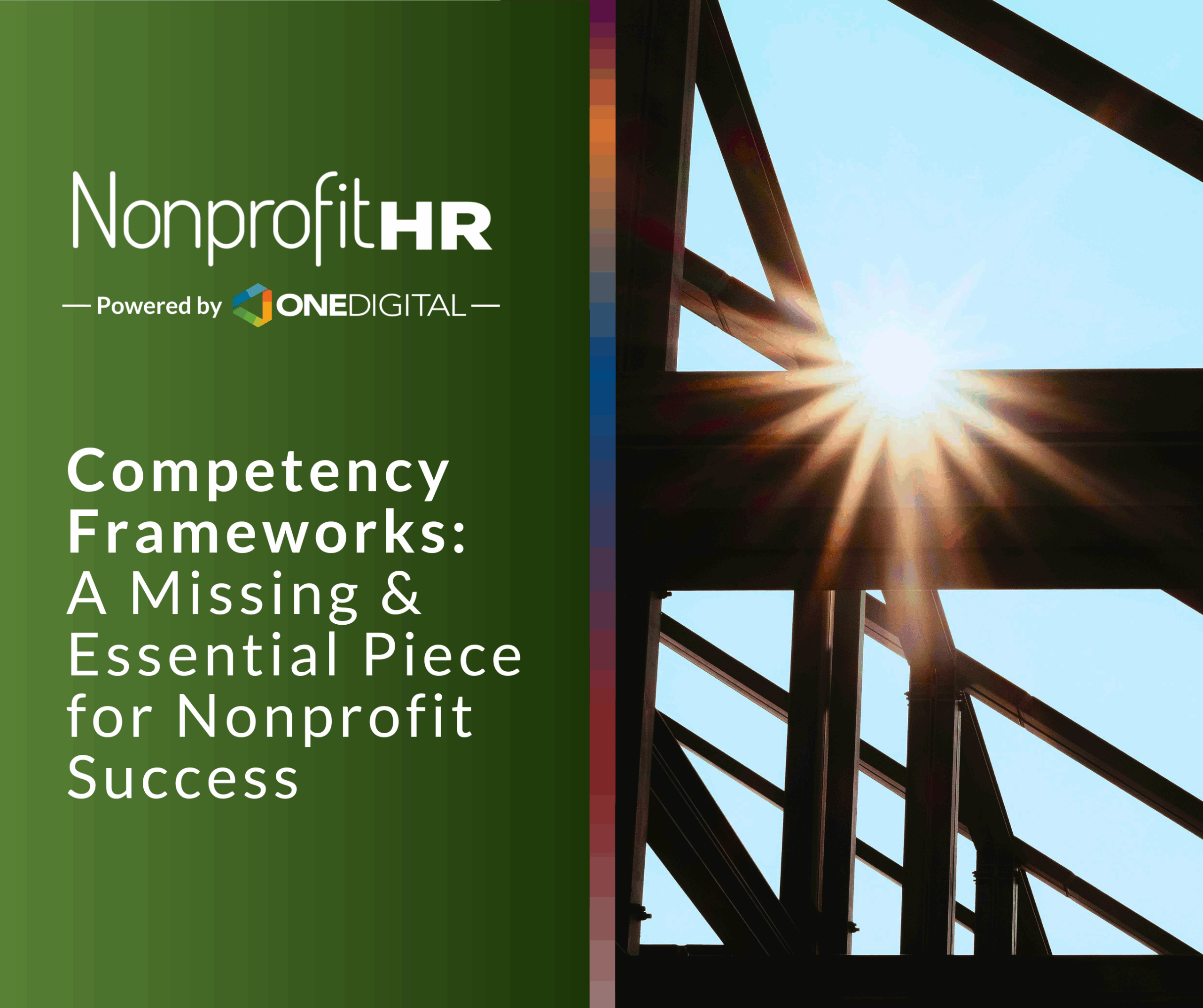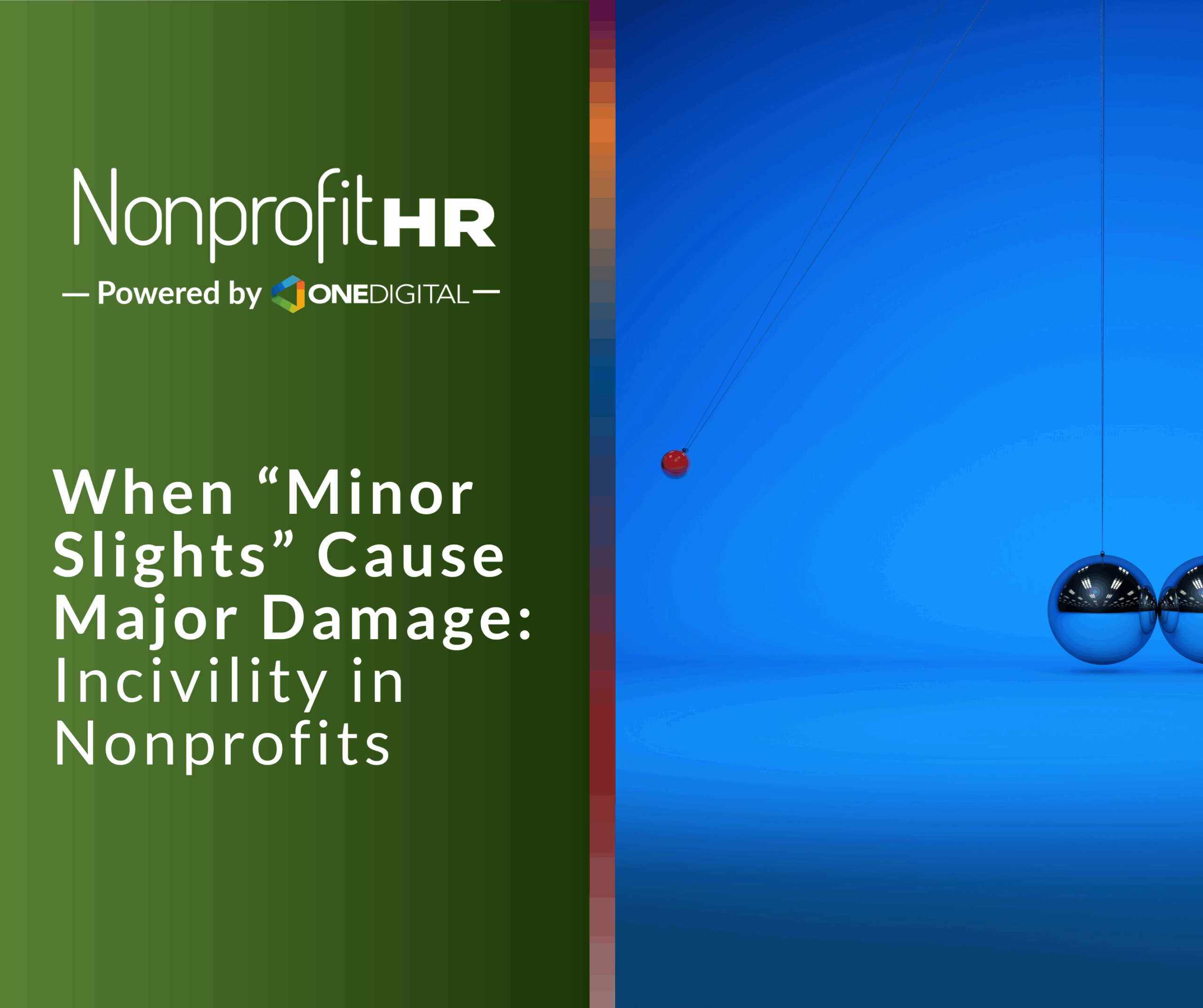WTOP: 5 ways nonprofits can…
By Alicia Schoshinski, Senior HR Consultant
One of the greatest challenges facing nonprofits is attracting and retaining qualified talent. Without this talent, organizations are unable to achieve their mission.
Often there are not many formal efforts put toward staff retention. In fact, the 2013 Nonprofit Employment Trends Survey results indicated that 9 out of 10 nonprofits surveyed lack a formal retention strategy. The cost of losing a valuable employee is high both in terms of lost productivity and dollars spent on hiring and training that employee, as well as doing the same for his or her replacement.
Retention is an ongoing process. Organizations need to focus on retention not only once they have employees on board, but also during the recruitment process and throughout the employment cycle. Everyone in an organization needs to be involved in retention efforts. In fact, managers should be held accountable for retention efforts.
Redefine Your Recruitment Strategies – Attract to Retain
In order to successfully retain staff, organizations should take a close look at their recruitment strategy. It is important to attract candidates that will be a good fit with the organization’s culture and are likely to stay and be engaged. The recruitment processes should support this and should include clear communication about the organization’s culture and a realistic job preview. In addition, since nonprofit recruitment budgets are often tight and the resources to properly recruit are not always available, organizations should utilize low cost recruiting sources and social media as part of their recruitment strategy.
Nonprofits must also compete for talent against the for-profit sector which can often pay higher salaries, therefore organizations should emphasize their total compensation package to prospective employees, particularly benefits and any programs related to organizational culture and work/life balance.
Employee Engagement is Key
Many believe that employees are primarily motivated by money. In fact, according to the 2012 SHRM Employee Satisfaction and Engagement Survey, compensation ranks 3rd on the list of job satisfaction elements (compensation was ranked number one in the 2007 survey). The top job satisfaction factor on this survey was the opportunity to use skills and abilities, with management/employee communication and relationship with supervisor as part of the top five.
Employee engagement relates to how well an employee is committed to the organization and how well they feel connected to it. Organizations are more likely to retain employees who feel engaged and have job satisfaction. The factors mentioned above all contribute to high levels of employee engagement, and therefore, greater staff retention.
In many nonprofits where budgets are tight and staff are stretched thin, employees can become disengaged and resentful leading to premature turnover. In order to avoid this, nonprofits can engage their employees in a number of ways.
Retention Solutions
One of the biggest advantages nonprofits have in terms of employee engagement and retention is the ability to foster employee commitment around the organization’s mission. Employees want to be able to use their skills and abilities to make a difference. By sharing the “big picture” with employees, managers are better able to help employees connect their roles to the mission and feel more engaged. Managers should also get to know their employees’ needs and interests and help to develop those. They should provide feedback – positive or constructive – regularly and recognize good performance. The culture of the organization can certainly contribute to whether an employee stays or leaves. If the culture is one of respect, inclusion, flexibility and trust, employees are more likely to feel engaged. Holding managers accountable for their performance and how they deal with their employees also helps prevent unwanted turnover.
Many nonprofits do not have a succession plan in place which means they aren’t prepared for the departure of key employees and they do not have a formal career path for the employees they would like to retain. Organizations should develop a talent pipeline and a list of key positions. They should identify any skill gaps and ways to address those gaps. Providing current staff with challenging and “stretch” assignments helps to grow that talent pipeline, in addition to better engaging staff.
Get Serious About Retention
Employers must get past the attitude that employees are lucky to have a job due to the lagging economy in recent years. Employers also have to realize that attrition is natural and some degree of turnover will happen. Even if their employees are not actively looking for a job, many are doing so passively. They may come across an opportunity and if they are not engaged, that may be just the push they need to consider leaving. Nonprofits need to make a conscious effort to engage their employees from the recruitment process though the rest of the employment cycle in order to retain these valuable resources needed to achieve the mission.
For more information on overcoming your organization’s retention challenges, register for the 2016 Nonprofit Talent & Culture Summit here.






























